Although branded as a Canon DL-9000, this camera was made by a Taiwanese company called New Taiwan Photographic Corp. who produced a dizzying array of inexpensive knock off “scameras” or “trashcams” that mimic the design of professional quality SLR cameras, but with far worse quality. New Taiwan produced cameras have appeared with brand names like Canon, Sony, Mitsubishi, and many, many others. Typically sold by mail order or given away as gifts or door prizes, it’s almost impossible to know how many were made or for how long. Many of them show up in garage sales and in online auctions in mint condition because they were hardly used. Despite their look, the camera is extremely poorly made, with a very limited feature set.
Film Type: 135 (35mm)
Lens: f/6.3 Focus Free Plastic Lens
Focus: ~6 feet to Infinity
Viewfinder: Scale Focus with 50mm Projected Frame Lines and Waist Level Finder with Fresnel Matte Screen
Speeds: Single Speed, the Manual says 1/100 ~ 1/125, but I don’t believe it
Exposure Meter: None
Battery: 2 x AA cells for camera and 2 x AA cells for the flash
Flash Mount: Hot Shoe
Weight: 1034 grams (w/ flash), 550 grams (camera only)
Manual: None
How these ratings work |
This summary is usually the very last thing I write when creating reviews, and I’ve already spent far too much time with this camera, that I’ll just simply say this thing is a complete piece of shit. Don’t buy one for shits and giggles. The only thing that “shits” about this camera is your life after having subjected yourself to it. | ||||||
| Images | Handling | Features | Viewfinder | Feel & Beauty | History | Age | |
| 0 | 0 | 0 | 1 | 0 | 0 | 0% | |
| Bonus | -1 because although the straight through viewfinder is sorta cool, everything else is so terrible, I can’t in good conscience give anything higher than a zero score | ||||||
| Final Score | 0.0 | ||||||
History

According to www.phrases.org.uk, the saying “Imitation is the Sincerest Form of Flattery”, dates back to the early 19th century with variations on that same message going back even farther. It would seem that mankind has a long tradition of copying other things that are seen as successful.
Such is the way of the Canon DL-9000, a cheap plastic camera with a body and flash that somewhat resembles a professional SLR camera. Of course this camera is not at all made by the same Canon that has made quality photographic equipment since the 1930s. The use of the name and stylized “Canon” logo is a blatant ripoff and trademark violation that Canon probably would have fought if there was any chance they could stop it.
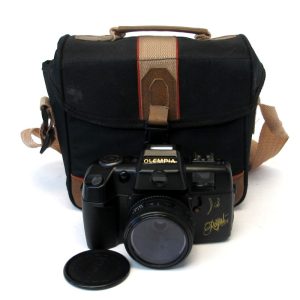
Canon wasn’t even the only major photographic company to have it’s name used on a ripoff like this. There exist models claimed to be made by Sony, Mitsubishi, and Argus. Sometimes, there are names used that aren’t exactly like a real camera company, but come close, like Canomatic, Olympia, Nikai, Nokina, Panasound, Tashika, and Mitsuba. Sometimes the names are just completely made up and mean nothing like Olempia, Gold Star, Cortland, Sonaki, Elco, Sana, Ultima, Akira, Cyber 2002, Nikkei, Globus, Minotar, Yoshita, Yunan, Impac, Fukai, Meikai, Orion, Polo Sharpshots, Millennium 2000, Magnamate, and many others.
Regardless of what name is affixed (often via a sticker) to the product, every one of these trashcams are of very poor quality and made entirely of plastic. The lenses are fixed focus, plastic, and have claimed focal lengths of 50mm with apertures of f/6.3 or on occasion f/4.5. Although made entirely of plastic, the cameras usually have quite a bit of heft, but only because of three metal weights that were glued inside of the camera, giving a false sense of quality.

The name “Canon DL-9000” on the model being reviewed here is an arbitrary name that is one of many used for similarly designed cameras that have been sold all over the world and produced in Taiwan, by a company called New Taiwan Photographic Corp who was founded in 1982 and has a long history of producing knock off cameras and other photographic products. On occasion, New Taiwan Photographic Corp. produced products using their own brand name of Ouyama on models like the Ouyama 2000H. Collectiblend has a huge list of many different known models produced by New Taiwan which probably isn’t even complete.
This class of camera is generally considered to be a “toy camera” but have also earned nicknames such “Scamera” or “Trash-Cam” for their clear attempts at pretending to be something they’re not.
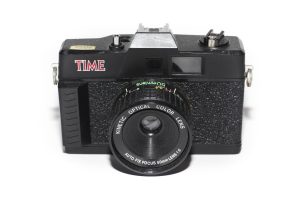
The earliest trashcams were usually given away as free gifts for signing up for things like magazine subscriptions or by signing up for a credit card. These early promotional cameras had specifications similar to later models like the DL-9000 with a single element plastic (some sites suggest that some were made with a glass element) focus free lens, with a single shutter speed and adjustable apertures.
Two such common examples are the Time Magazine camera given away in the mid 1980s to US subscribers of Time Magazine and the nearly identical Barclaycard camera given away in the UK to those customers who signed up for a new VISA card.
Check out the commercial below from 1985 for TIME magazine, where they entice people with great gifts, such as a 35mm camera, just for signing up
It would seem that New Taiwan had enough success building and selling these early promotional models to expand their offerings directly to customers by making models that gave the illusion that they were more than a simple toy.
When a company is in the business of ripping off someone else’s design, it is in their best interest to not keep good records of their history, so finding information about this company was quite difficult. Some sources on the Internet suggest that the earliest products were made in 1990, but I believe that to be earlier as there exist Akira branded names that bear heavy resemblance to the Minolta 5000 AF from 1987 suggesting the first models were from this time.
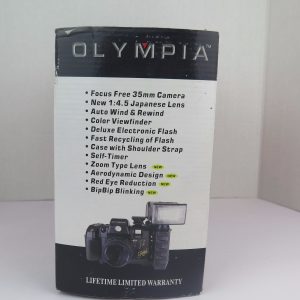
As the years went on, the design of the camera evolved, featuring curved lines, a more modern looking lens, and stickers claiming to be made in Japan. Later models bearing a brand name of “Big Royal View” upped the feature set to include an f/4.5 lens (which I doubt), and features like Red Eye Reduction, telescopic flashes, self-timers, zoom lenses, and hilariously, something called “BipBip Blinking”.
Although the packaging of New Taiwan cameras often had stickers claiming to have Suggested Retail Prices as high as $399.95, there is little evidence to support that these cameras were ever sold through traditional retail channels. They were likely given away as gifts or were promotional items offered to people for signing up for a credit card or listening to some telemarketer’s speech. In my research for this article, I was not able to find a single advertisement for these cameras or any type of literature that explains how someone would come across such a camera during their peak of popularity. I couldn’t even find conclusive dates to when they were made.
Amazingly, there were a ton made as these things show up with regularity on auction sites like eBay and shopgoodwill.com. People report seeing them at garage sales, thrift stores, and for sale on sites like Craigslist and Facebook Marketplace. Most sellers acknowledge that these are cheap cameras, but the occasional seller lists it as a professional type camera with prices well over $100.
My best guess is that the bulk of New Taiwan models were likely produced from the mid to late 1980s through the end of the 1990s or possibly even early 2000s when consumers started to shift away from film cameras to digital models.
The company doesn’t seem to exist today, as they have no current web presence. A few Google searches for their name returns a site which describes the company as:
New Taiwan Photographic has designed and manufactured photographic equipment for over two decades. Our mainland China production facilities boast 110 plastic injection machines and more than 1,000 skilled workers. This gives us a monthly production capacity of more than one million units. We at New Taiwan Photographic also welcomes your OEM/ODM projects.
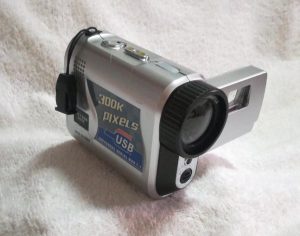
The same site suggests the company can be found on the web at www.ouyama.com but the website is no longer maintained. A search through the Wayback Machine at web.archive.org suggests the original website was abandoned sometime in 2013, possibly suggesting the company ceased to exist after that. At the time, their 2013 website listed the company’s products as USB hubs, PC web cams, MP3 players, and a few others.
It’s not likely that anyone will ever come up with a more conclusive history about the company simply because the market was so saturated with these types of mass produced cheap consumer goods products made in China and it’s provinces. New Taiwan was likely one of a million such companies that just so happens to have a history making a lineup of cheap cameras that still show up for sale.
Today, there is a small market for collectors and users for these cheap trash-cams. People enjoy running a roll of film through them, not knowing what kind of unique defects they’ll get in their pictures. Odd color casts, light leaks, scratches, and other imperfections that would have otherwise reduced a quality camera like a Nikon or Canon to a repair job, are embraced when shot through these types of cameras. Despite this limited appeal, their values still remain quite low. There are literally hundreds of these for sale online at any moment and many go unsold for prices cheaper than it costs to ship them to a buyer. Still, for as unscrupulous as the company might have been, there is a general curiosity about this camera that just might make them worth checking out…assuming you don’t pay too much.
My Thoughts

Last year for April Fool’s Day, I thought it would be fun to post a review for one of these cheap “Big Royal View” scameras pretending to gush over it’s amazing feature set, and then quickly follow it up with an honest review. As it would turn out, “quickly” turned into a whole year as I found it incredibly difficult to get through a full roll of film for some actual sample photographs to share.
My struggle with the camera was in it’s use. This thing is ungainly to hold. In it’s effort to look “pro”, the camera is not a very good “everyday camera”. I could have removed the flash and only carried the camera itself, but I felt obligated to keep the whole lot together which added to my frustration.
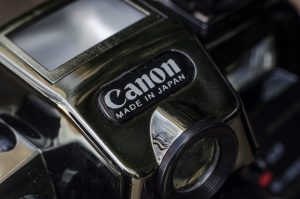
We know that this camera was sold under hundreds of different names with different cosmetics but largely the same features. Despite only handling this one Canon DL-9000, I feel as though I can draw conclusions that are true of most New Taiwan cameras, and the first is that this thing is garish. It’s big, and surprisingly heavy. The weight of the camera suggests that there’s quite a bit of complex electronics, metal gears, and levers inside of this thing.
With the flash, but no batteries, the camera weighs 1034 grams. Take off the flash and the camera by itself weighs 550 grams which is still a far cry from a fully loaded Nikon F5 with lens, extended battery grip, and auxiliary flash might, but for the target market, this thing does have some heft…
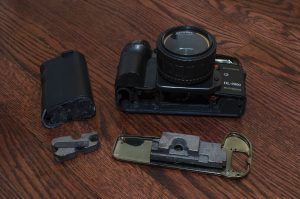
…but where?! This thing is made almost entirely of plastic, there is absolutely no glass anywhere, not the lens, not the viewfinder, nothing. The weight has to come from something though, it’s almost like as if there are lead weights inside of the camera.
In a very laughable, yet totally unsurprising revelation, after removing a few screws at the bottom of both the camera and the flash, not one, not two, but three metal weights were found to be contributing to the DL-9000’s heft. Weighing a total combined 485 grams, these weights make up almost HALF of the entire camera’s 1034 gram weight. After putting the bottom plate back onto the camera body without the flash or any of the weights, the camera itself weighs only 373 grams, a weight much more in line with it’s cheapness.
The build quality of the camera is as cheap as you’d expect with plastic panels that don’t quite match up with other plastics on the camera. You can see casting marks all over the body from the injection molding machines which made them. The top half of the camera has some type of smoked chrome plating on top of the plastic that scratches easily and shows pretty much every fingerprint that you put on it.
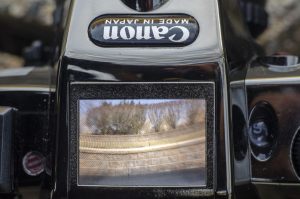
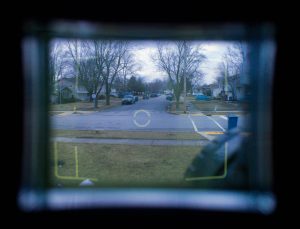
There’s two viewfinders, a waist level finder that’s on top of what would normally be a pentaprism (which the camera lacks) that offers a pseudo-TLR experience through the “hole” above the main taking lens of the camera. The other viewfinder is a straight through reverse Galilean type on the back of the camera that is quite large. The rear viewfinder is pretty much the only part of the camera that pleasantly surprised me. The viewfinder has a bluish tint to it with projected bright lines not unlike a quality rangefinder from the 1960s or 70s. Although this is a focus free camera, and there is no way to gauge distance when looking through the viewfinder, for a very brief moment, you can actually forget that you have a crummy plastic camera to your eye when looking through it.
As soon as you pull the viewfinder away from your eye however, that all goes away again. Comparing the two viewfinders, the rear one is far more useful, and predictably offers a very different view than the waist level one which offers a heavily distorted and completely useless view of your image. I don’t think that New Taiwan made any effort to provide a viewfinder that correctly shows what a 50mm lens would capture on film. In fact, even though the sticker on top of the lens says it has a 50mm lens, I doubt very much that anyone took the time to measure the actual focal length of the “lens”.
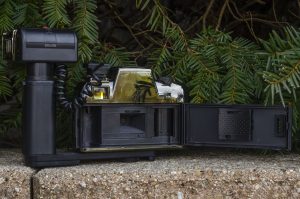
Loading film into the camera requires a lock on the camera’s left side to be unlatched, allowing the door to open. The right hinged door is extremely flimsy and brings into doubt the light-leak preventing capabilities of the door. Loading film into the camera is a mostly uneventful experience with a new cassette going on the left and the take up spool on the right. Conveniently, the DL-9000 has a clear plastic window on the back door allowing you to read the text on the side of the 35mm cassette, like most cameras from the late 80s and 90s did.
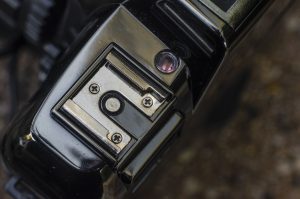
Although the DL-9000 offers automatic film advance, the camera lacks a modern film quick loading system where you pull out the film leader to a certain point, close the door, and let the camera handle the rest. You still need to attach the leader to the spool and fire the shutter a couple of times to make sure it captures the leader correctly. Thankfully, the shutter fires as normal with the door open. If you are still unsure as to whether the film is advancing properly after closing up the camera, there is a film travel indicator on the top plate of the camera that rotates each time the film is advanced.
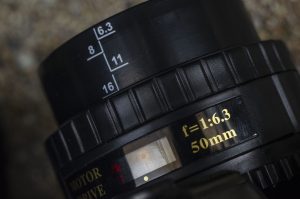
Other than the sole exception of the “sorta good” rear viewfinder, shooting with the camera is not a pleasant experience. The camera constantly creaks in your hands while holding it. The front aperture ring has absolutely no dampening and rotates as you might expect two pieces of injection molded plastic rubbing against each other. The shutter release requires varying degrees of pressure to fire. I found that sometimes it would fire with a gentle press, other times, I needed so much force, I could hear the entire body creaking in my hands. The film advance motor literally sounds like a dying cow each time the film advances. There were many times I thought that it was about to completely short out before it could make it to the next exposure. I used the same freshly charged NiMH Panasonic Eneloop AA batteries that I use to power my Nikon SB-600 Speedlight, and I know these batteries have a strong and powerful discharge rate, so any failure of the internal motor couldn’t possibly have had anything to do with a shortage of power.
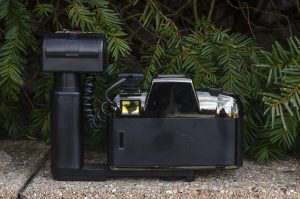
The Konica AiBorg can finally breathe a sign of relief as it is no longer the worst camera I have ever shot. I went into this review with as low of expectations as I think I could possibly have, and somehow Cano…I mean New Taiwan has managed to lower the bar even farther. I am confident that you could take a time traveler from the 14th century, an alien from an uncivilized planet, a newborn baby, or even a scarecrow, and show them this camera alongside the crappiest 1980s fixed focus Vivitar point and shoot camera, and ask them which was the more capable photographic tool, and they’d correctly pick the Vivitar each and every time.
Quite simply, using this camera sucked. It sucked more than I thought a camera could suck. My life is worse now after having used this camera. I am currently seeking counseling…
My Results
The Canon DL-9000, along with every other New Taiwan product is not a serious camera, but I wanted to approach this review as if it was. I loaded in a roll of fresh Fuji 200 film because I am very familiar with it and I know what to expect from any images I got from it. I wanted to give this camera as good of a chance as possible to show what it could do. I made an attempt to set the correct aperture setting for the scene I used it in. I used the flash a couple of times, shot indoors, and outdoors.
Although I shot a 24 exposure roll through the camera, a good half of the images didn’t come out at all. They were either completely black or just blurry blobs of nothingness. Of the ones where there was an image on them, many of them were heavily blurred, suggesting either the shutter stayed open way too long, or that body shake caused significant blur to the photos. Nearly all of them had light leaks, some which can be seen here. Quite simply, the images I got from this camera were the worst I’ve seen from any camera I’ve ever used.
I realize these cameras were meant to be built as cheaply as possible and were likely never going to be marketed towards a real photographer. I doubt the designers at New Taiwan had any illusion that anyone would pay $399.95 for a camera like this, but I wonder what they might have been able to accomplish had they tried a bit harder.
Instead of making “ripoff” cameras pretending to be made by someone else, and boasting things like “Made in Japan” lenses that weren’t, and mimicking a large SLR camera that required three metal weights to give some heft to, the company might have found a real market for a cheap, but good camera that could have been marketed towards children or beginning photographers.
A few changes like a much smaller body would have been a good start. There’s just no reason a camera needs to be this big. A majority of the insides are hollow plastic, so why not shrink the body down to that of a smaller SLR like an Olympus OM-series. The through the body optical viewfinder is actually decent, and could stay, but the waist level finder is completely useless and doesn’t even correctly show a 50mm frame, so it should have been omitted. Since there’s no need for a prism, they could make the camera even smaller than an Olympus OM-series.
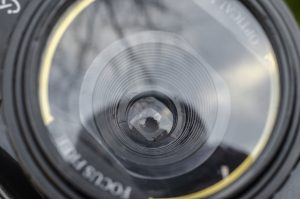
Next, they could get rid of the gimmicky plastic covering like the smoked chrome top plate. Just make the whole thing out of matte finish black plastic that wouldn’t scratch as easily or show fingerprints. I think that the money they could save by not putting in the three metal weights could have been used to make a more solid and durable body.
Finally, replace the single element meniscus lens with a glass one. I’m not talking a Tessar here, meniscus lenses can have their charm, and on 35mm can look pretty decent but even a glass doublet would have been a huge upgrade from what this has.
That’s really it. Get rid of the gimmick garbage, give it a smaller and better designed plastic body, and put in a glass lens. Oh, and a real user manual too so people could actually understand it. I think a cheap camera like this could have been produced and sold for $20 – $30, and I bet people would have bought it. But no, they decided to keep churning these things out for well over a decade.
Related Posts You Might Enjoy
External Links
http://camera-wiki.org/wiki/%22Olympia%22_camera
https://www.japancamerahunter.com/2012/10/camera-review-the-dl-9000-aka-the-scamera-by-joe-aguirre/
https://digitofilm.blogspot.com/2016/12/dl-9000-scamera-nikon-edition.html

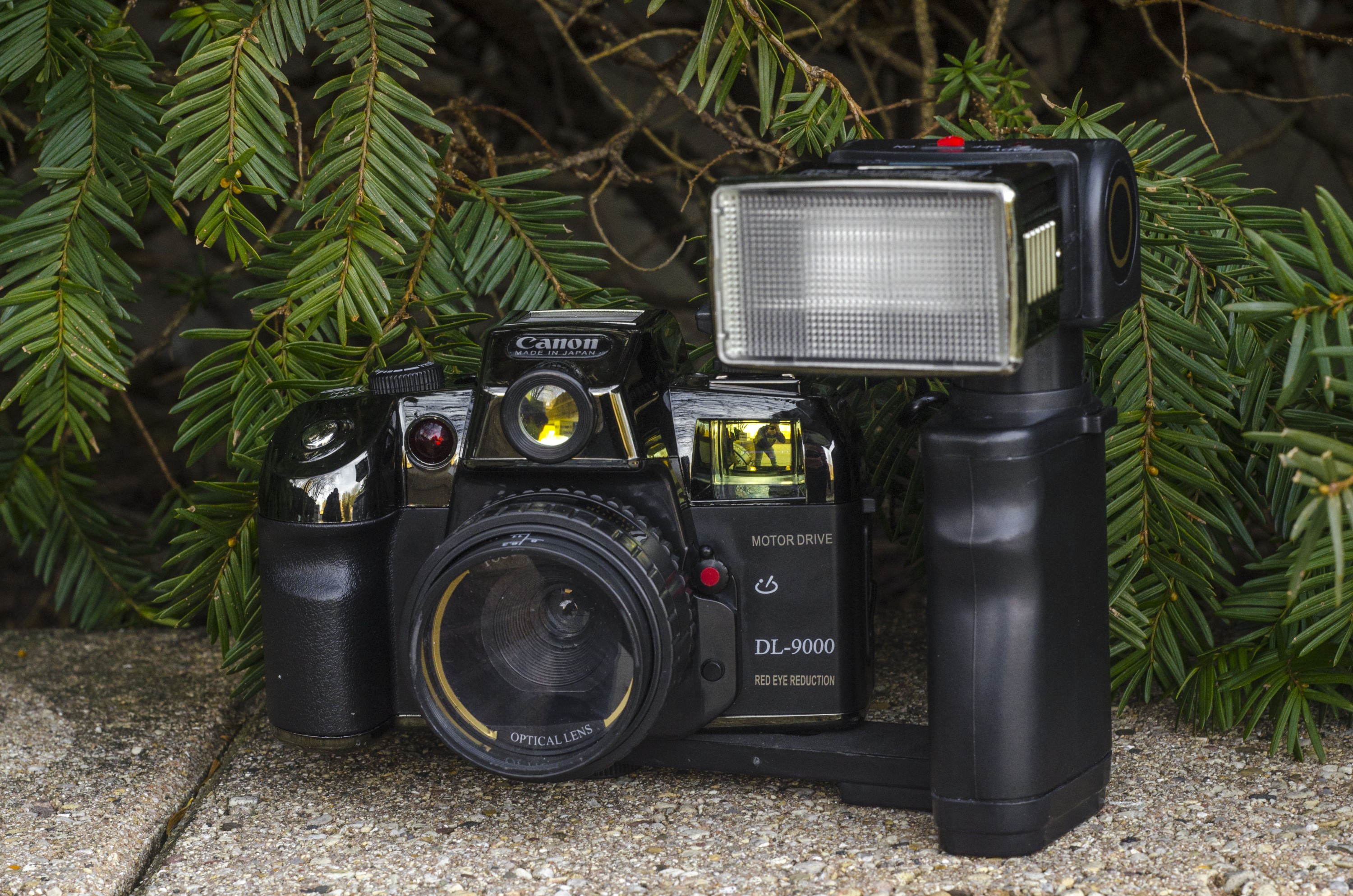

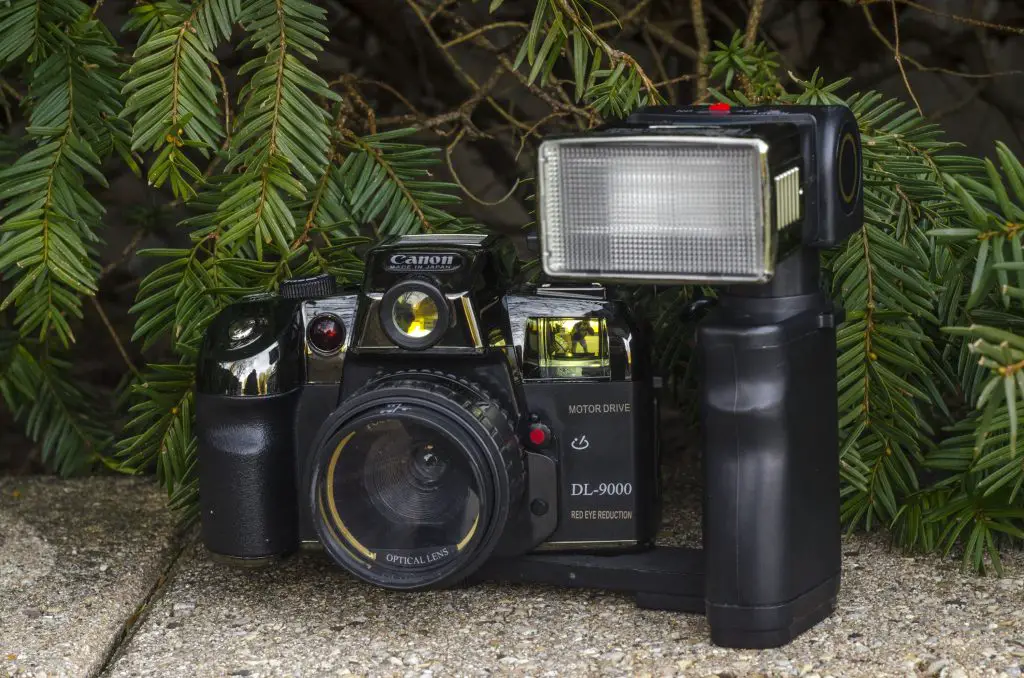





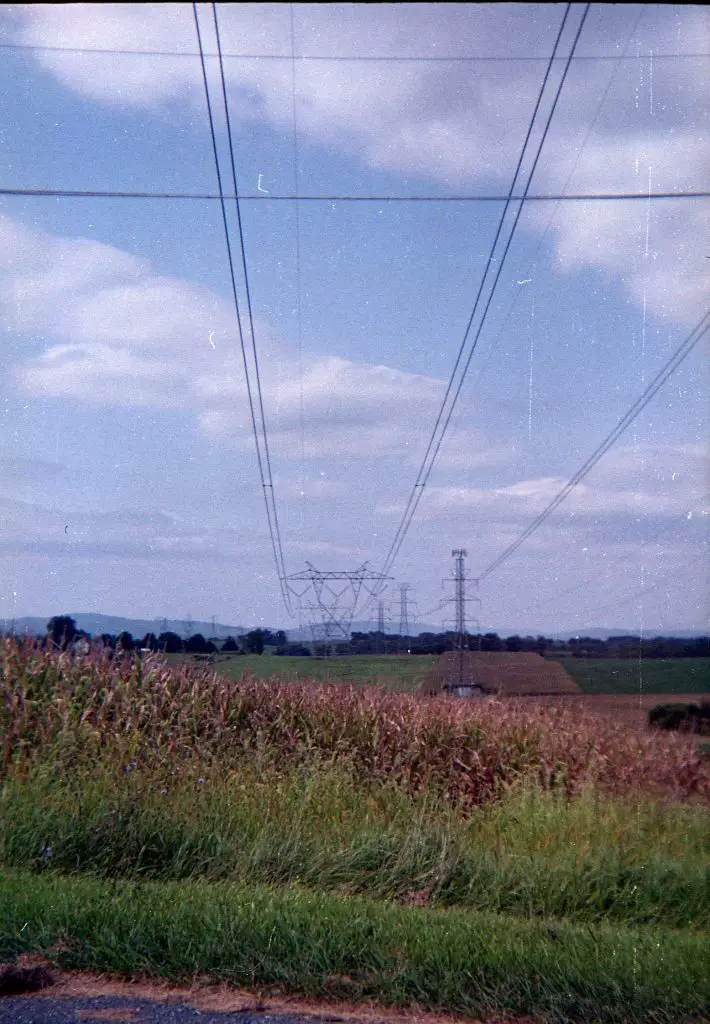


You actually got an entire roll of film thru this plastic banana camera! Impressive! I see these New Taiwan gems on eBay, often priced around $50 … sad. Does Canon have any avenue to sue for misuse of their trade name?
If by “an entire roll of film” you mean a full length of a 35mm cassette, yes. If by, a entire rolls worth of usable pics, then no. More than half the roll was unusable!
very funny post, laughed through the whole thing, thank you 🙂
Glad you liked it. The earlier version of this review was an April Fool’s Joke, but this one was my attempt at a legit review for it.
Thanks for the article – enjoyed reading it, even if I cringed a bit when you started using it! Sad truth is that I’ve just seen eight of these bad boys on ebay, at prices from 30- 110 USD. Buyer beware!
Yeah these things were given away, so there are a ton of them out there, many of which are unused in their original packaging because of how terrible they were!